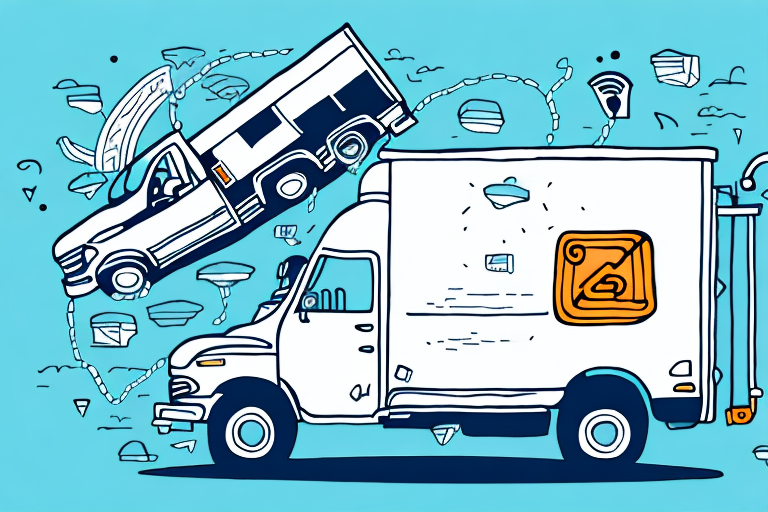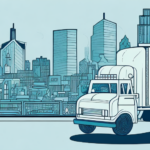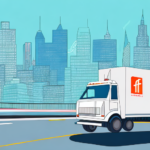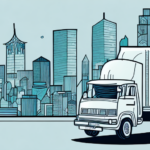How Last Mile Delivery Tracking Can Improve Your Business
In today's rapidly evolving business landscape, last-mile delivery has become a crucial factor that can make or break a company's success. With the surge in e-commerce, customers now expect lightning-fast delivery times, and businesses must adapt to meet these demands. This is where last-mile delivery tracking plays a pivotal role, offering businesses the tools to enhance their delivery performance and ultimately boost their bottom line.
The Importance of Last-Mile Delivery in Modern Business
Last-mile delivery refers to the final step of the delivery process, transporting goods from a distribution center or warehouse directly to the customer's doorstep. This stage is critical as it represents the final interaction between the customer and the business:
- Customer Satisfaction: A positive delivery experience can lead to repeat business and referrals.
- Reputation Management: Negative delivery experiences can harm a company's reputation and result in lost sales.
In today's competitive environment, companies that excel in last-mile delivery—such as Amazon—set themselves apart by meeting customer expectations for speed and reliability. Failing to do so can result in losing market share to more efficient competitors.
Exploring the Challenges of Last-Mile Delivery
Last-mile delivery presents several logistical challenges that companies must navigate to ensure efficiency and customer satisfaction:
Traffic Congestion in Urban Areas
Delivery trucks often face delays due to busy streets and limited parking options, leading to missed delivery windows.
Increasing Demand for Fast Delivery
The rising expectation for same-day or next-day delivery pressures companies to optimize routes and ensure timely deliveries.
Handling Small and Medium-Sized Packages
The surge in e-commerce has increased the number of smaller packages, requiring more resources and efficient handling strategies.
Unpredictable Weather Conditions
Adverse weather can disrupt delivery schedules, necessitating flexible and adaptive delivery systems.
What Is Last-Mile Delivery Tracking and How Does It Work?
Last-mile delivery tracking involves leveraging technology to monitor delivery vehicles and the delivery process in real-time. Key technologies include:
- GPS Tracking: Provides real-time location data of delivery vehicles.
- Barcodes and QR Codes: Facilitate efficient scanning and tracking of packages.
- Mobile Apps: Enable communication between customers and delivery drivers.
By utilizing these technologies, businesses can gain insights into their delivery operations, such as driver efficiency, effective routes, and areas with frequent missed deliveries. This data empowers companies to optimize their delivery processes, reduce delivery times, and enhance overall customer satisfaction.
The Benefits of Implementing Last-Mile Delivery Tracking
Implementing last-mile delivery tracking offers numerous advantages:
- Increased Visibility: Helps identify and eliminate bottlenecks in the delivery process.
- Cost Reduction: Optimizes routes to minimize fuel consumption and labor expenses.
- Enhanced Customer Satisfaction: Provides real-time updates and accurate delivery estimates.
- Environmental Sustainability: Reduces carbon footprint through optimized routing.
- Improved Inventory Management: Ensures accurate tracking of inventory levels and delivery schedules.
For example, companies like ShipScience have reported significant cost savings and efficiency gains by integrating advanced tracking systems into their delivery operations.
How Last-Mile Delivery Tracking Can Reduce Costs and Boost Efficiency
Last-mile delivery tracking contributes to cost reduction and efficiency in several ways:
Route Optimization
Utilizing real-time traffic data allows delivery drivers to choose the most efficient paths, reducing delivery times and fuel costs.
Optimal Staffing Levels
Tracking systems help businesses adjust staffing based on demand, ensuring adequate coverage during peak times and avoiding overstaffing during slower periods.
Enhanced Data Insights
Analyzing delivery patterns and customer behavior enables businesses to make data-driven decisions that further streamline operations.
Improved Customer Communication
Providing customers with real-time tracking information reduces uncertainty and enhances the overall delivery experience, leading to increased customer loyalty.
Case Studies: Real-Life Examples of Last-Mile Delivery Tracking Success
Major Online Retailer
A leading online retailer implemented last-mile delivery tracking and reduced delivery times by over 30% by optimizing delivery routes with real-time traffic information.
Grocery Retailer
A grocery store chain utilized delivery tracking to optimize staffing and delivery schedules, resulting in savings of over $1 million in labor costs and a 30% reduction in delivery times.
Furniture Company
By integrating last-mile tracking, a furniture retailer enhanced customer satisfaction through real-time delivery updates, decreasing missed deliveries and improving overall customer experience.
Understanding Key Metrics for Measuring Last-Mile Delivery Performance
Tracking the right metrics is essential for assessing and improving last-mile delivery performance:
- Delivery Times: Average time taken to deliver packages.
- Missed Deliveries: Frequency of failed delivery attempts.
- Customer Satisfaction: Feedback and ratings from customers.
- Deliveries Per Hour: Number of deliveries completed within an hour.
- Cost Per Delivery: Total cost incurred for each delivery.
- On-Time Deliveries: Percentage of deliveries made within the promised timeframe.
- Average Delivery Distance: Typical distance covered per delivery route.
By monitoring these metrics, businesses can identify areas for improvement, optimize their delivery processes, and enhance overall efficiency. For comprehensive analysis, integrating these metrics with analytics tools is recommended.
The Role of Technology in Optimizing Last-Mile Delivery Tracking
Technology is at the heart of effective last-mile delivery tracking, offering tools that enhance visibility and efficiency:
GPS Tracking
Provides real-time location data, enabling route optimization and timely deliveries.
Artificial Intelligence and Machine Learning
Predictive analytics can forecast traffic patterns and optimize delivery routes, reducing delays and improving efficiency.
Drones and Autonomous Vehicles
Innovative delivery methods that can navigate congested areas, reducing delivery times and operational costs.
Blockchain Technology
Ensures secure and transparent records of delivery processes, enhancing accountability and preventing fraud.
Mobile Applications
Facilitate seamless communication between customers and delivery drivers, improving the overall delivery experience.
Integrating these technologies can significantly enhance the efficiency and reliability of last-mile delivery operations.
Tips for Choosing the Right Last-Mile Delivery Tracking Software
Selecting the appropriate last-mile delivery tracking software is crucial for optimizing delivery operations. Consider the following factors:
- Compatibility: Ensure the software integrates seamlessly with your existing systems and platforms.
- Scalability: Choose software that can grow with your business needs.
- Real-Time Data and Analytics: Opt for solutions that provide comprehensive real-time tracking and robust analytics capabilities.
- Ease of Use: The software should have an intuitive interface for both administrators and delivery personnel.
- Customization: Look for solutions that offer customizable features to align with your specific operational requirements.
- Support and Training: Ensure the provider offers adequate support and training resources.
Companies like ShipScience offer tailored solutions that address various business needs, providing scalability and robust tracking features essential for efficient last-mile delivery operations.
In Conclusion
The rise of e-commerce and the increasing demand for faster, more efficient delivery options have made last-mile delivery a critical aspect of modern business operations. Implementing last-mile delivery tracking offers numerous benefits, including real-time visibility, cost reduction, enhanced customer satisfaction, and improved operational efficiency.
Despite challenges such as traffic congestion and unpredictable weather conditions, the advantages of last-mile delivery tracking are undeniable. By leveraging advanced technologies and focusing on key performance metrics, businesses can overcome these challenges, reduce costs, and boost efficiency.
Moreover, providing customers with accurate delivery estimates and real-time updates enhances their experience, fostering loyalty and repeat business. As the logistics landscape continues to evolve, investing in robust last-mile delivery tracking solutions will be essential for businesses aiming to stay competitive and thrive in the dynamic market.




















